Disclosure: This article contains affiliate links. We may earn a commission from purchases at no extra cost to you, which helps our travel content.
The morning mist clung to the cobblestone streets as I navigated my way up yet another impossibly steep alley. My calves burned in protest, but the promise of what awaited at the summit kept me moving forward. As the sun began to pierce through the clouds, the first golden rays illuminated the baroque façades of Ouro Preto, transforming ordinary stone into liquid gold—a fitting tribute to the city whose name literally means 'Black Gold.' I adjusted my camera settings, knowing that this fleeting moment of perfect light was precisely why I'd traveled to this remote Brazilian mountain town in the middle of winter.
Why Winter in Ouro Preto is a Photographer's Dream
Visiting Ouro Preto during Brazilian winter (June-August) might seem counterintuitive, but it's actually the secret season photographers should treasure. The light here takes on a quality I've rarely encountered elsewhere—crisp, golden, and dramatic, with none of summer's hazy humidity to diffuse it.
The winter months bring clear blue skies that create perfect contrast against the whitewashed colonial buildings and their ornate golden church interiors. More importantly, you'll find misty mornings that burn off into brilliant afternoons, offering two distinct shooting environments each day.
After three visits to Ouro Preto in different seasons, I've learned to pack my polarizing filter to manage those intense reflections off the polished gold church interiors. The dramatic shadows cast by the low winter sun create natural leading lines across the cobblestone streets that simply don't exist during summer months.
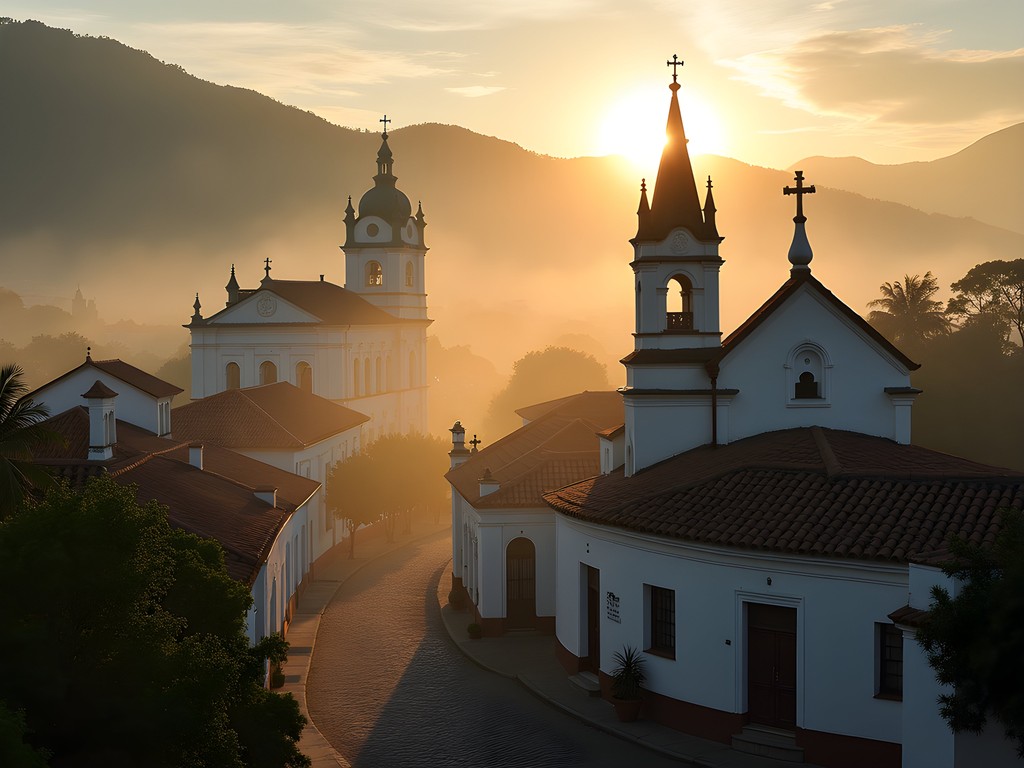
💡 Pro Tips
- Arrive at viewpoints 30 minutes before sunrise for the mystical fog that envelops the city
- Pack extra memory cards—the combination of golden light and baroque details means you'll shoot twice as much as expected
- Use a polarizer to control reflections when photographing church interiors
Navigating Ouro Preto's Challenging Terrain
Let me be perfectly clear: Ouro Preto is not for the faint of heart or weak of knee. Built across steep hillsides during the 18th-century gold rush, the town seems to defy gravity with its vertiginous streets and stairways that connect one breathtaking vista to another.
After my first visit ended with blistered feet and aching thighs, I've learned to approach this town strategically. I now divide the city into upper and lower shooting zones, tackling one section per day rather than zigzagging across its punishing topography.
My hiking poles have become unexpected photography companions here, providing stability on the slippery cobblestones while carrying heavy gear up those 45-degree inclines. And don't underestimate the importance of proper footwear—my trail runners offer the grip needed on polished stones that have been worn smooth by three centuries of use.
The physical challenge is substantial, but the photographic rewards are worth every labored breath. Each painful ascent delivers you to another postcard-perfect view that few tourists ever capture.

💡 Pro Tips
- Stay near Praça Tiradentes (the main square) to minimize the most punishing climbs
- Use trekking poles for stability on slippery cobblestones when carrying camera gear
- Book accommodations with rooftop access for sunrise/sunset shots without the climb
The Golden Churches: Timing and Technique
Ouro Preto houses some of Brazil's most spectacular baroque churches, each one a masterclass in gold leaf artistry. The town's wealth, extracted from nearby mines and the labor of enslaved people, was poured into these structures—nowhere more impressively than at Igreja de São Francisco de Assis and Nossa Senhora do Pilar.
Photographing these interiors presents unique challenges. The contrast between shadowy corners and brilliant gold altarpieces exceeds what most camera sensors can handle in a single exposure. After much experimentation, I've found that bracketing exposures (3-5 shots at different settings) and merging them later provides the best results.
Most churches open around 8:30 AM, but I've discovered that arriving at São Francisco precisely at opening offers about 20 minutes of glorious solitude before tour groups arrive. The caretakers know me now, and sometimes allow me early access when I explain my photography project.
For the technically minded: leave your tripod at the hotel (they're prohibited), but bring a camera bean bag that can be placed on pew backs or ledges for stability during longer exposures. I also keep a small LED light panel in my bag to gently illuminate architectural details lost in shadow.

💡 Pro Tips
- Request permission before photographing church interiors (small donations are appreciated)
- Visit churches early in the morning before tour groups arrive
- Use exposure bracketing to capture the full dynamic range of dark interiors with gold highlights
Beyond the Churches: Finding Unique Perspectives
While Ouro Preto's churches rightfully command attention, I've found that the town's most compelling photographic opportunities often lie in the spaces between these monuments. The juxtaposition of everyday life against this UNESCO backdrop creates images with depth and narrative.
One of my favorite shooting locations is the small plaza behind Igreja Nossa Senhora do Carmo. From this elevated position, you can capture the church's impressive rear façade while incorporating the cascading rooftops that tumble down toward the valley. The late afternoon light here is particularly magical, turning the terracotta tiles into a river of copper.
For street photography enthusiasts, the market near Praça Tiradentes offers rich visual storytelling. I spend hours here with my prime lens capturing vendors arranging their colorful produce against weathered colonial walls.
Don't miss the miners' quarters in the Antônio Dias district, where the humble homes of those who extracted the region's wealth stand in stark contrast to the opulent churches their labor financed. These less-photographed areas tell the complete story of Ouro Preto better than any postcard shot of a church façade.
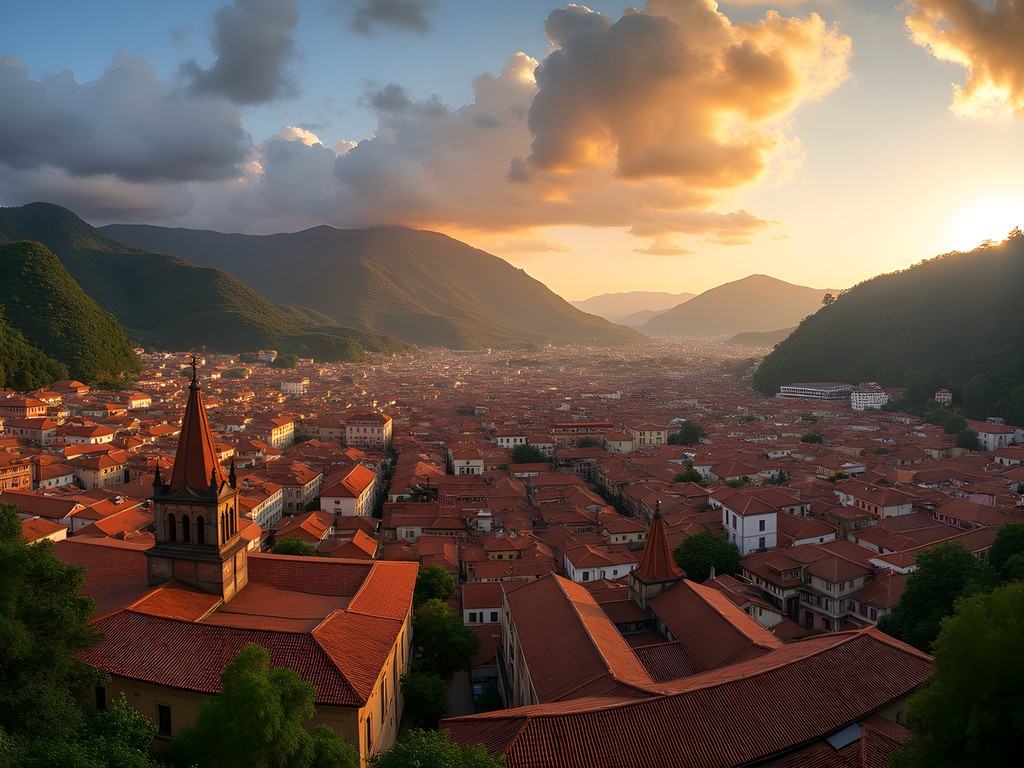
💡 Pro Tips
- Explore the residential areas away from the main tourist circuit for authentic street scenes
- Visit the miners' quarters for compelling visual contrasts to the ornate churches
- Photograph local markets in early morning for the best light and most active scenes
Essential Gear and Practical Considerations
After three visits to Ouro Preto, I've refined my gear strategy to balance comprehensive coverage with the reality of carrying equipment up and down those punishing hills. My current setup includes a full-frame mirrorless body with three key lenses: a wide zoom (16-35mm) for church interiors and street scenes, a standard prime (50mm) for everyday shooting, and a medium telephoto (70-200mm) for compressing the layered rooftops and hills.
Rather than a traditional camera backpack, I've found that my sling bag distributes weight better when navigating steep terrain. It allows quick access without removing the bag entirely—crucial when the perfect light waits for no one.
Ouro Preto's unique lighting conditions demand filters. Beyond my polarizer, I never travel here without my graduated ND filters to balance bright skies against shadowed streets. For church interiors, my remote shutter release eliminates camera shake during longer exposures when using my bean bag support.
Power access can be limited during day-long shoots, so I keep two spare batteries charged and ready. The town's elevation (approximately 1,150 meters) means temperatures drop quickly after sunset—my photographer's gloves allow me to adjust settings without exposing fingers to the winter chill during blue hour shoots.
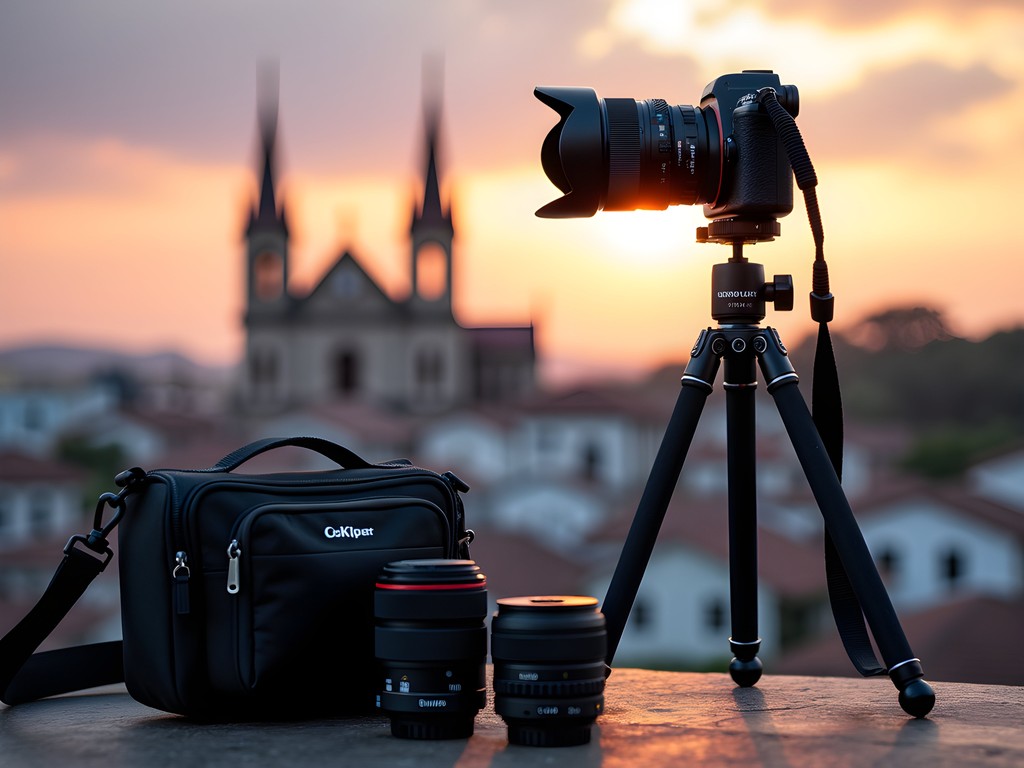
💡 Pro Tips
- Pack a polarizer and graduated ND filters to manage Ouro Preto's challenging light conditions
- Use a sling bag rather than backpack for better weight distribution on steep streets
- Bring a lens cleaning kit—the combination of dust and humidity can quickly affect image quality
Final Thoughts
As I pack away my gear after a final blue hour session overlooking the twin spires of Igreja do Rosário, I find myself already planning my return to Ouro Preto. This isn't a destination you can fully capture in a single visit—each alley, each church, each cobblestone street offers infinite variations as the light changes throughout the seasons.
What makes this colonial gem so photographically rewarding isn't just its obvious baroque splendor, but the layers of history and humanity that reveal themselves to those patient enough to look beyond the postcard views. The physical demands of photographing Ouro Preto are considerable, but they force you to slow down, to be intentional about each composition, each climb, each moment.
If you're willing to rise before dawn, to climb those punishing hills in pursuit of perfect light, and to engage with this living museum beyond its golden façades, Ouro Preto will reward you with images that capture not just its architectural beauty, but its enduring soul. Pack your filters, lace up those supportive shoes, and prepare for a photographic adventure that will challenge your legs as much as your creative vision.
✨ Key Takeaways
- Winter (June-August) offers the best photographic conditions with clear light and morning mist
- Divide the town into shooting zones to manage the challenging topography
- Arrive at churches when they first open to avoid crowds and capture the best interior light
- Look beyond the famous churches to find unique perspectives that tell Ouro Preto's complete story
- Pack minimally but thoroughly—every extra pound matters on these steep cobblestone streets
📋 Practical Information
Best Time to Visit
June to August (Brazilian winter)
Budget Estimate
$75-150 per day including mid-range accommodation and meals
Recommended Duration
5-7 days
Difficulty Level
Moderate To Challenging Due To Steep Terrain


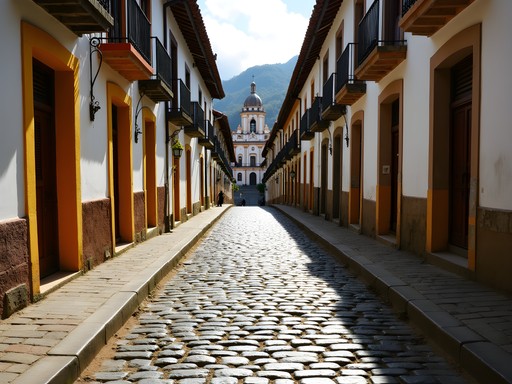
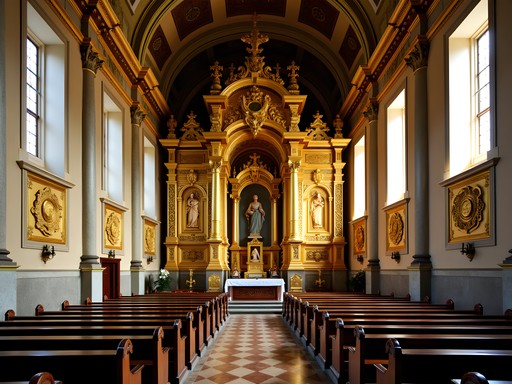
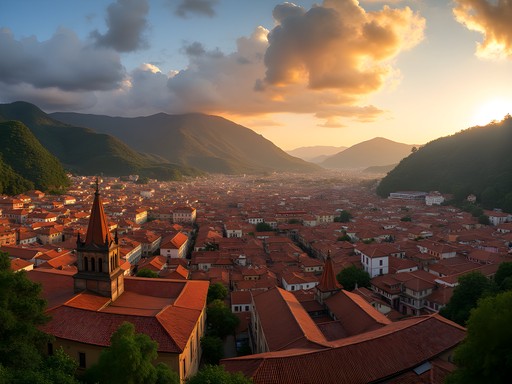



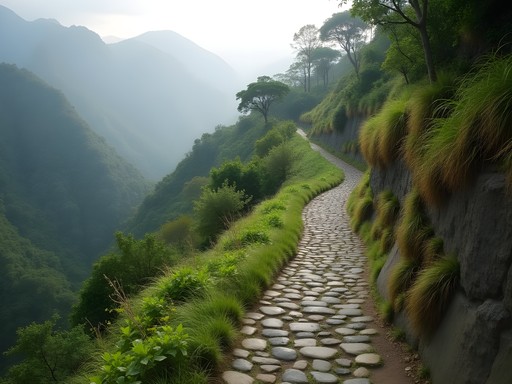

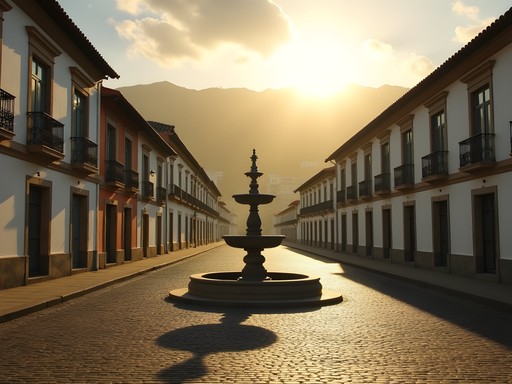

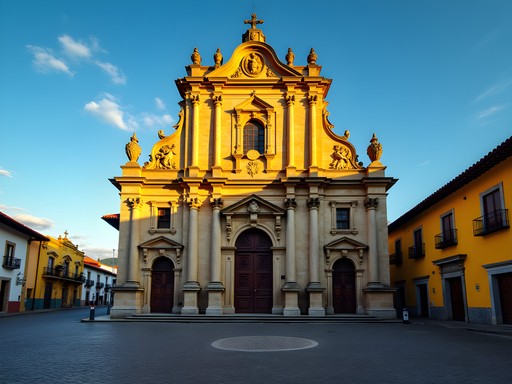



Comments
summerninja6546
Omg those golden church photos are STUNNING! The way you captured the light hitting the baroque details is insane. Definitely adding Ouro Preto to my bucket list now!
Evelyn Rogers
Thank you! The light there is truly magical, especially in winter when the air is crisp and clear. Hope you get to visit soon!
summerninja6546
Do you think a smartphone would be enough to capture decent photos or is a DSLR essential?
Evelyn Rogers
Modern smartphones can definitely capture beautiful shots! The golden hour light is so rich there that even phone cameras shine. Just bring a small tripod for those low-light church interiors.
oceannomad
Planning a trip for next winter after seeing these gorgeous photos! How many days would you recommend staying to really capture the city? And are there any photography restrictions I should know about?
Evelyn Rogers
I'd recommend at least 4-5 days if photography is your focus. The changing light and weather means each day offers something different! Most churches allow non-flash photography with paid entry, but tripods are generally not allowed inside. Igreja de São Francisco is particularly strict - sometimes they'll ask you to check your camera bag at the entrance.
Taylor Moreau
Excellent guide, Evelyn. I've photographed historic sites across Latin America for various publications, and Ouro Preto presents unique challenges and rewards. Your advice about winter visits is spot on - the quality of light between June and August is exceptional, with less haze and more dramatic cloud formations. One additional tip I'd offer is to consider the seasonal festivals when planning. The Semana Santa (Holy Week) processions create extraordinary photographic opportunities with the baroque churches as backdrops, though accommodations book quickly. For those struggling with the terrain, don't overlook the smaller chapels in the lower parts of town - they often contain remarkable artwork without the uphill trek. I'll be returning in May to document the mining history for a British heritage magazine.
tripway
Those blue hour shots are incredible! The twin spires against that deep blue sky... 😍
moonseeker
Beautiful post! Did you have any issues with security while carrying expensive camera gear around town? Any precautions you'd recommend?
Bryce Diaz
Evelyn, you've captured the essence of what makes Ouro Preto so special for photographers! I spent three weeks there last year documenting the churches for a project, and that golden hour light on the soapstone is something I still dream about. For anyone planning a trip: the viewpoint from Santa Efigênia looking back toward Nossa Senhora do Pilar at sunset is worth every painful step up that hill. I found that my travel tripod was essential for those low-light church interiors where they don't allow flash. The town feels like it exists in another century once you get away from the main square - just you, centuries-old architecture, and that incredible Brazilian light.
oceannomad
Did you find it difficult to photograph inside the churches? I've heard some don't allow cameras at all.
Bryce Diaz
Most allow non-flash photography with a ticket purchase. São Francisco de Assis was the strictest - they watch you like hawks there! Worth every real though.
sunnywalker
Going there in September! Any recommendations for viewpoints to capture the whole city panorama? Love your shot overlooking the twin spires!
beachnomad
Not the author but when I was there, the view from Chácara dos Ingleses was amazing for panoramas. Just bring good walking shoes!
starwalker
Just got back from Ouro Preto and your guide would've been SO helpful before I went! I was there during summer and the harsh midday light was terrible for photos. Wish I'd known about that sweet spot timing for Igreja de São Francisco de Paula. My tip for anyone going: bring proper walking shoes! I thought my regular sneakers would be fine but those cobblestones are slippery and the hills are WAY steeper than they look in photos. My calves were screaming by day two!
Savannah Walker
Evelyn, your post brought back so many memories! I visited Ouro Preto two years ago and completely underestimated those hills - my quads were screaming by day two! Your section on 'Navigating Ouro Preto's Challenging Terrain' should be required reading for anyone planning a visit. One tip I'd add is to book accommodation near the center to minimize the daily climbing. I stayed at Pousada do Mondego which had amazing views and saved me some uphill battles. For photographers, I found early morning (6-7am) offered the most magical light with fewer tourists. The mist rolling through the valley creates this ethereal atmosphere that's pure magic for photos. Did anyone else notice how the light bounces differently off the soapstone sculptures compared to the gold leaf?
sunnywalker
YES to the early mornings! I got my best shots at dawn when the streets were empty. The light hitting São Francisco de Assis at sunrise is absolutely magical!
Savannah Walker
@sunnywalker Totally agree about São Francisco de Assis! Did you make it inside for the ceiling paintings? I went back three different times trying to get the light just right.
Timothy Jenkins
Brilliant post, Evelyn! I visited Ouro Preto last winter and can confirm it's absolutely magical for photography. The way you captured the interplay of light on the baroque facades is spectacular. One tip for anyone planning a visit - the Igreja de São Francisco de Paula slightly off the main tourist path offered some of my best shots with fewer crowds. For those struggling with the terrain, I found staying near Praça Tiradentes gave a good central base to explore in shorter bursts. And don't forget to pack your polarizing filter - absolute game changer for managing those reflections off the gold leaf interiors when they allow indoor photography!
Evelyn Rogers
Thanks Timothy! Great tip about São Francisco de Paula - I almost missed that one. And yes to staying central! I was at a pousada near Praça Tiradentes and it saved my legs many times.
coffeemate4308
Any recommendations for viewpoints to capture the whole town? Planning my trip for June next year.
Timothy Jenkins
The view from Morro São Sebastião is spectacular, especially at sunset! There's also a great vantage point near Capela do Padre Faria on the eastern edge of town.
Venture X
Premium card with 2X miles, $300 travel credit, Priority Pass